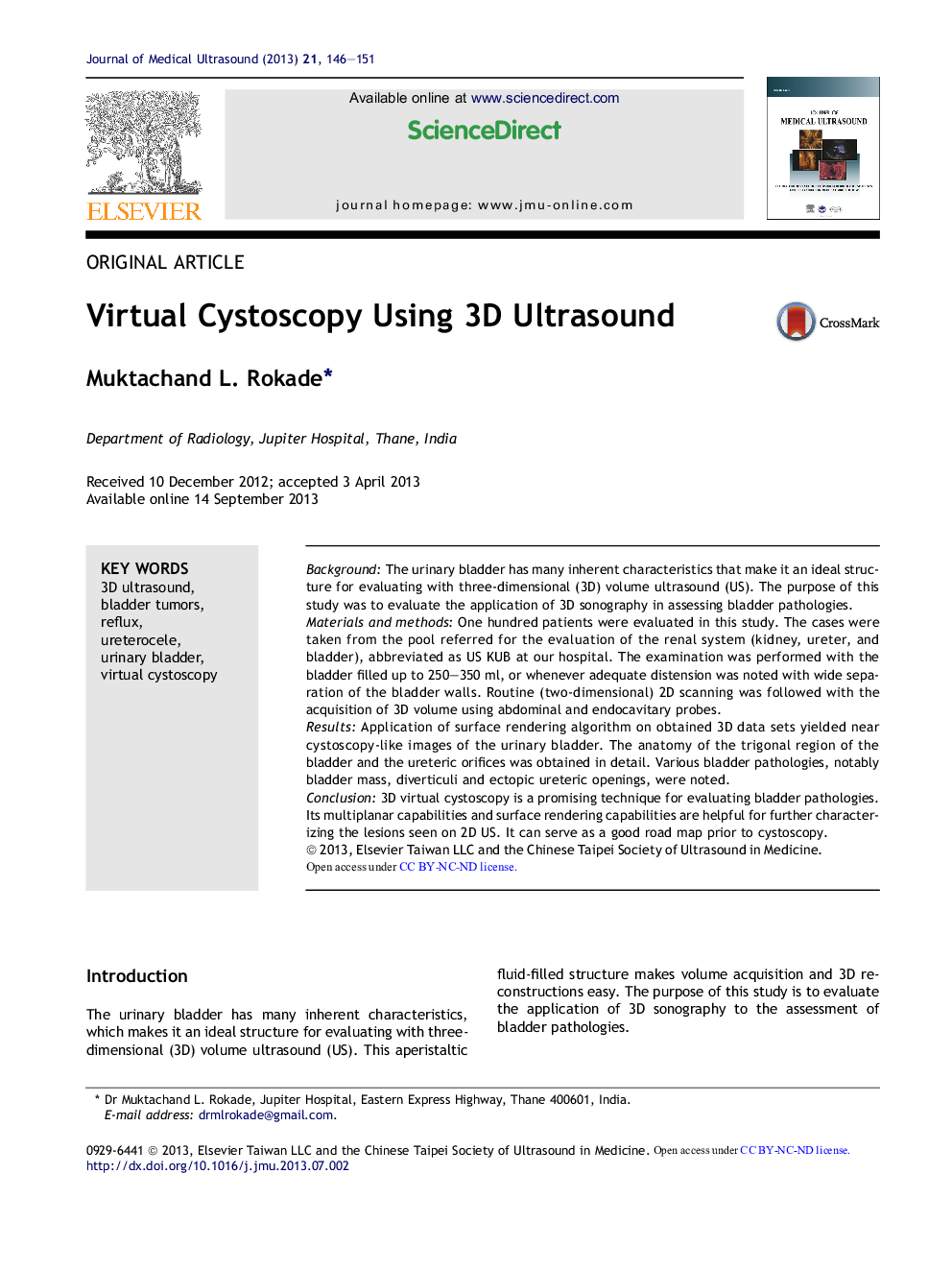| Article ID | Journal | Published Year | Pages | File Type |
|---|---|---|---|---|
| 4233144 | Journal of Medical Ultrasound | 2013 | 6 Pages |
BackgroundThe urinary bladder has many inherent characteristics that make it an ideal structure for evaluating with three-dimensional (3D) volume ultrasound (US). The purpose of this study was to evaluate the application of 3D sonography in assessing bladder pathologies.Materials and methodsOne hundred patients were evaluated in this study. The cases were taken from the pool referred for the evaluation of the renal system (kidney, ureter, and bladder), abbreviated as US KUB at our hospital. The examination was performed with the bladder filled up to 250–350 ml, or whenever adequate distension was noted with wide separation of the bladder walls. Routine (two-dimensional) 2D scanning was followed with the acquisition of 3D volume using abdominal and endocavitary probes.ResultsApplication of surface rendering algorithm on obtained 3D data sets yielded near cystoscopy-like images of the urinary bladder. The anatomy of the trigonal region of the bladder and the ureteric orifices was obtained in detail. Various bladder pathologies, notably bladder mass, diverticuli and ectopic ureteric openings, were noted.Conclusion3D virtual cystoscopy is a promising technique for evaluating bladder pathologies. Its multiplanar capabilities and surface rendering capabilities are helpful for further characterizing the lesions seen on 2D US. It can serve as a good road map prior to cystoscopy.
